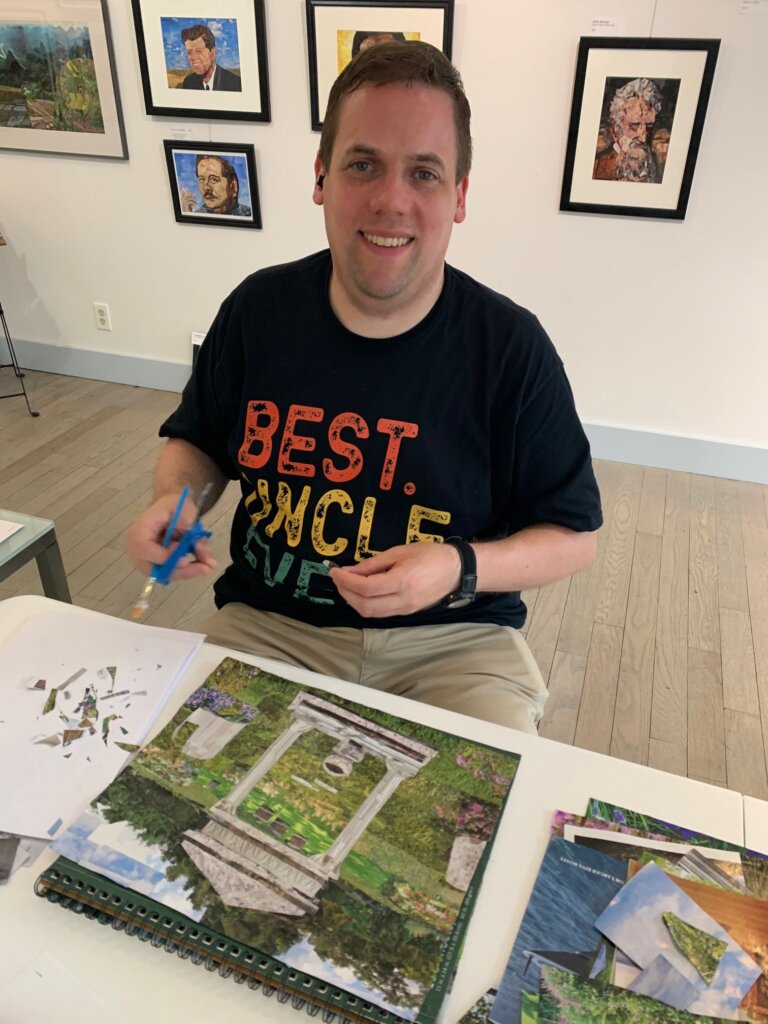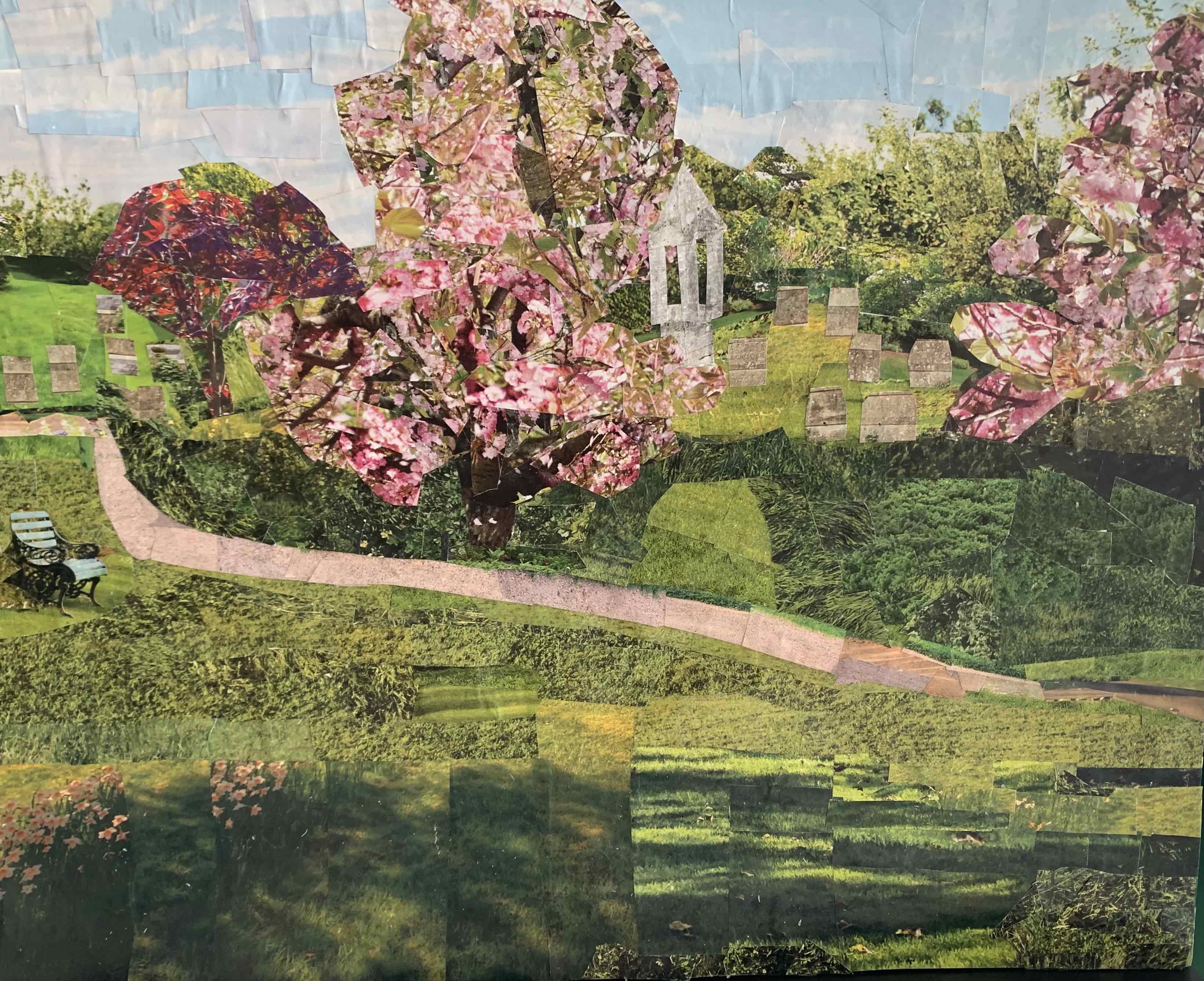Seeing Mount Auburn with a Different Eye: A Conversation with John M. Williams
Jessica Bussmann February 1, 2023 Art

In 2022, we welcomed seven Artists-in-Residence to create original works inspired by their experiences at Mount Auburn. Meet visual artist John M. Williams. This interview was originally published in February 2023.
_________________________________
Please tell us about yourself and your artwork.
I have been an artist all my life, starting with clay modeling at age four, and progressing through college to earn a Bachelor’s in Fine Arts (UMass Lowell) with a concentration in sculpture. Following graduation I decided to change direction to create a new genre of collage, combining my artistic sensibility with my passion for history. The results were highly-researched portraits of historical figures enhanced with background vignettes adding context to their stories. These thought-provoking portraits are mini history lessons about the life and times of each person.
Later I branched out into historical maps and eventually into landscapes like the ones created for my residency at Mount Auburn Cemetery shown in this exhibit. My landscapes are restful and calming – providing a safe and intimate hideaway for the viewer and for me.
Creating collages is a metaphor for my daily life dealing with autism. Living with this challenge is a daily struggle with overwhelming anxiety and the discomfort of never fitting in socially. These feelings never leave me. The world is a chaotic place for me, and thoughts swirl around endlessly in my head, making it hard to stay calm and focused. Art gives me respite and purpose. I feel it is my way of leaving a legacy.
You’ve described your collages as “painting with paper,” can you tell us a little more about your process?
My medium is cut paper collage. I use hundreds of small pieces of cut magazine paper to create my images. I make order out of chaos by piecing tiny pieces of cut paper into totally new and coherent visions. Once I draw out the design and choose the paper colors and textures, the process of applying the paper takes on a life of its own and the end result is often different and more intriguing than the original concept. I describe this process as “painting with paper.” From a distance viewers experience my work as paintings. At mid-range they begin to realize it is not paint, but what then? Curiosity brings them up close to observe the detail of the individual pieces. It is interesting to watch viewers become absorbed in the process, marveling at how small pieces of paper create such complex images with strong 3-dimensional qualities.

How does your training in sculpture inform your 2D artworks?
Although I am creating 2-dimensional works, I actually see them in my mind as 3-dimensional. Obviously my sculptural training helps in this. For example, I am able to use shades, shapes and colors of paper to create bone structure in the faces of my portraits. Similarly I create perspective in landscapes by the size, color and placement of paper. I see all of this in my mind before creating the image. It just comes naturally to me.
What in the landscape of Mount Auburn inspired your art? How did you choose the composition for each piece?
I made trips to Mount Auburn in each season to walk the paths and absorb the feeling of the place, especially the trees and birds. I took photographs of scenes that caught my attention. My inspiration came from the varied landscape and how the monuments often fit like natural elements. I was drawn to monuments with aesthetic designs that blended into the landscape.
Spring was based on a colleague’s photo of Dry Dell. It is a more impressionistic piece with the beautiful flowering trees and suggestion of the monuments on the hill.
Summer reflects the bright sunshine of a summer’s day on the monument, grass and flowers. It is a cheerful scene with the detailed monument dancing a bit on its hillside setting, depicting the hilly landscape of Mount Auburn.
Autumn is my favorite. I photographed this scene from numerous angles to study the perspective and lighting. The use of backlighting illuminates the monument nestled in its wooded grove. The light on the birch and monument on the right add contrast interest.
Winter is also based on a photograph taken in January 2022 of this charming bird. I was surprised to see him standing on the ice of Auburn Lake and wondered what he could find to eat there. I like the way the sun illuminates the ice and his white breast.
What is your favorite season at Mount Auburn?
Autumn is my favorite season at Mount Auburn and everywhere in New England.



Comments
Comments for this post are closed